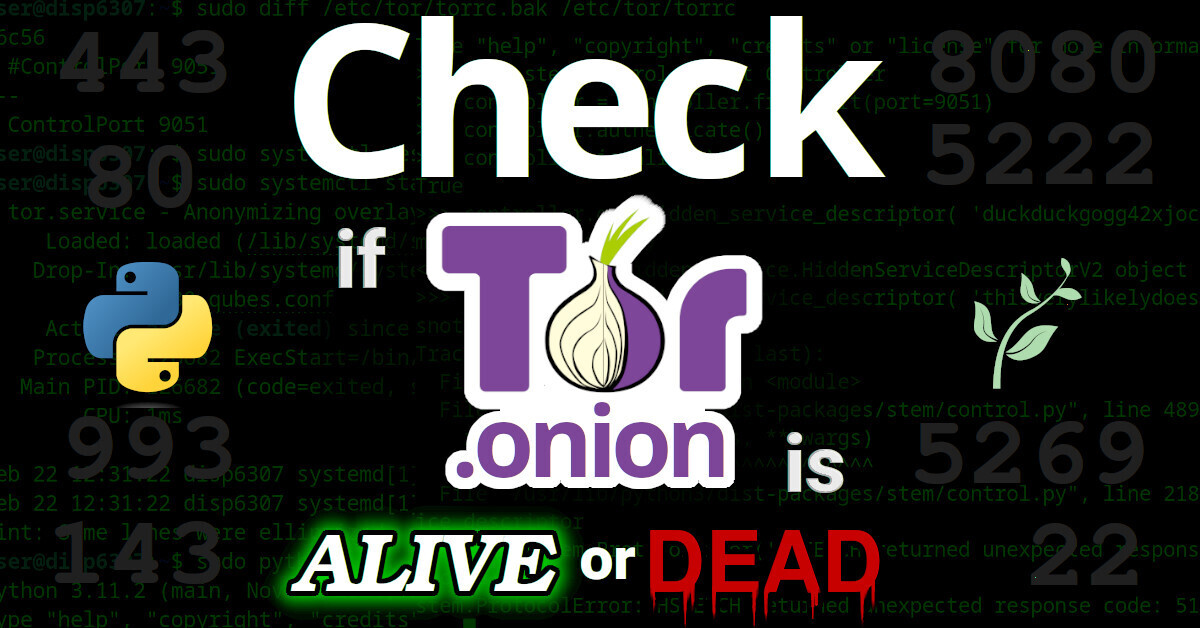I make and sell BusKill laptop kill cords. Monero is accepted.
- 241 Posts
- 86 Comments

 53·4 months ago
53·4 months ago𝐒𝐨𝐜𝐤·𝐩𝐮𝐩·𝐩𝐞𝐭
/ˈ𝘴ɑː𝘬 ˌ𝘱ʌ𝘱.ɪ.𝘵𝘳𝘪/(n.) An online identity created, and used, for purposes of deception. A sockpuppet purports to be an independent party that supports, approves of, or agrees with some agent (a person, organization, agency, or state), but is in fact created and controlled by that agent, and has no independent existence. Common uses of sockpuppets include plausibly deniable hacking or information operations, provocation, and astroturfing (creation of the illusion of grassroots support).

 43·4 months ago
43·4 months ago𝐒𝐨𝐜𝐤·𝐩𝐮𝐩·𝐩𝐞𝐭
/ˈ𝘴ɑː𝘬 ˌ𝘱ʌ𝘱.ɪ.𝘵𝘳𝘪/(n.) An online identity created, and used, for purposes of deception. A sockpuppet purports to be an independent party that supports, approves of, or agrees with some agent (a person, organization, agency, or state), but is in fact created and controlled by that agent, and has no independent existence. Common uses of sockpuppets include plausibly deniable hacking or information operations, provocation, and astroturfing (creation of the illusion of grassroots support).

 11·4 months ago
11·4 months agoOh no :( What’s wrong with Debian?!

 61·4 months ago
61·4 months agoRemoved by mod

 1·8 months ago
1·8 months agoRemoved by mod
@[email protected] why is this not federating with our instance? It’s missing upvotes and comments
Also, kinda surprising, we don’t have a security-related community here on this instance?

 3·8 months ago
3·8 months agoRemoved by mod

 2·8 months ago
2·8 months agoRemoved by mod

 3·8 months ago
3·8 months agoRemoved by mod

 2·8 months ago
2·8 months agoRemoved by mod

 1·8 months ago
1·8 months agoCan you elaborate? Any idea why Stripe would choose this design?
I think Stripe generally has good security practices. But I just can’t understand this design choice. There has to be a reason…

 1·8 months ago
1·8 months agoRemoved by mod

 1·11 months ago
1·11 months agoQGIS does have many native OSM plugins
I’m not sure if any get you vector-based contour lines.

 1·11 months ago
1·11 months agodeleted by creator

 6·1 year ago
6·1 year agoYeah, it’s dangerous for a community to tolerate and adopt closed-source software. We should have done a better job pressuring them to license it openly.
The OSM wiki pointed me to Maperitive first, but I wish it pointed me to qgis first. We should probably edit the wiki with a huge warning banner that the code is closed, the app is full of bugs, and that it is not (and can not be) updated.
Edit: I took my own advice and added a big red box to the top of the article warning the user and pointing them to QGIS instead.
Edit 2: Do we have any way to know when the latest version of Maperitive (v2.4.3) was released? Usually I’d check the git repo, but…
Edit 3:
staton theMaperitive-latest.zipfile says that it’s last modified2018-02-27 17:25:07, so it’s at least 6 years old.
The Wordpress Activity Pub plugin is on my TODO list. I opened some bug reports with them recently.
what happens if I die? what happens if my site goes down? what happens if a site is “protected” by cloudflare (and therefore makes the content inaccessible to at-risk folks)? what happens if a site has an authwall (and therefore is inaccessible to less-privileged folks)?
I think it’s important for us to federate content, not just links.
it’s a lot of work, but basically I copy the html from wordpress into pandoc, convert it to markdown, and then do a lot of cleanup
I didn’t copy the whole post here because it’s so much work, but I usually do when there’s less images and my articles aren’t likely to exceed the max char limit :)
Well, the title was mostly a take from this post:
But I guess I should have said a “PV system”? Or do you have a better name?













I noticed the site was down, and I was very sad :(
Thanks for your work. Lemmy is a piece of shit to host and moderate, but is there really a better option in 2025?
I definitely think federated is the best solution. Specifically ActivityPub. Is nostr not federated?
What’s the state of SubLinks and PyFedi?